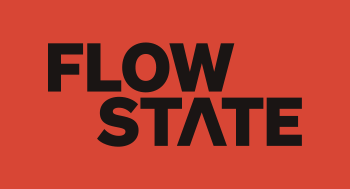THE ROLE OF VISION IN PERFORMANCE
Several times I have watched elite level sport on TV and heard commentators infer that a certain player appears to have ‘more time’ available to them than the other athletes on the same pitch, court or track. This highly-regarded quality of having ‘more time’ seems to give that player a performance advantage over their opposition. It is a quality that seems to further elevate the most elite sports men and women. They almost seem unplayable or untouchable in moments that demand fast, almost reflexive, decision making.
However, rationally we all know that time does not slow down per se when these individuals are called to action. So, what is actually happening?
Sports’ performance research has uncovered that a specific vision-brain-behaviour relationship, termed perception-action coupling, underpins this quality. Expert performers, at a subconscious level, have an enhanced ability to visually gather and process critical contextual cues from their performance environment. This gives them a performance advantage as it allows them to make accurate, in-the-moment, predictions on how different scenarios will unfold. These predictions drive reflexive decision-making, actions and/or movements so they can effectively maximise their performance. In turn this allows them to exploit opportunities and/or minimise potential threats earlier and more efficiently that their opponents.
To demonstrate let’s use the example of a footballer. An expert player will be visually scanning the pitch in real-time. They are continuously updating the positioning, movement speed and direction of all the players in relation to the ball and their own positioning on the pitch. Indeed, evidence has shown that many of the greatest players, in the modern era, complete more scans in the final 10 seconds before they touch the ball than other players on the pitch.
As play progresses the shape of both teams fluctuates as distances between players open and close. Advanced perception-action coupling skills allow our expert player to anticipate and predict the movements and actions of opposition players earlier, and more accurately. This creates a performance advantage by allowing the expert to execute a specific decision, action and/or movement before their opponent. Based on the cues they read, they may recognise that the alignment and spacing between two defenders is becoming disrupted. This allows them to ghost into a small pocket of space and get a shot off. In defensive situations they may read an attacking player’s body language, identify their intended run, and subtly adjust their own positioning to intercept what may have been a killer through ball and eliminate the danger.
The very best players have faster and more accurate responses as they subconsciously predict their opponent’s next action through this enhanced cognitive ability. They, at times, almost appear a step ahead of the game.
Although the specific context differs dramatically, leading CEO’s and managers in business as well as expert performers in the most elite units in the military, police, search & rescue, surgical departments, fire service, aviation and medical emergency response communities, amongst others, also display advanced perception-action coupling skills.
A sub-set of perception-action coupling is a process termed ‘quiet eye’. This behaviour describes what an athlete visually focuses upon, and for how long, just prior to executing their desired skill. Unconsciously, and at the right moment, elite performers cut through all the visual distractions and laser their focus onto the most crucial and critical cues. At the same moment, non-expert performers are desperately searching through a vast blanket of visual fog trying to determine what is going to happen next.
NON-EXPERTS LOOK AT EVERYTHING YET SEE NOTHING.
EXPERTS FOCUS ON SPECIFIC CUES TO SEE EVERYTHING.
Is this information important? Absolutely.
If we are training athletes, police officers, military operators, surgeons etc. then it is important that the skills we teach are transferable to their performance environment. At times, isolating and developing specific skills is highly appropriate and beneficial. At other times exposing trainees to information-rich training environments that require them to utilise perception-action coupling to develop decision making and skill execution is critical.
So, can we develop perception-action coupling and ‘quiet eye’?
There is eye-tracking technology available that can record gaze behaviours during the execution of a skill. This means we can examine the research and build our understanding of the cues that elite performers scan for, focus on, and maintain their gaze upon. Doing so can help us develop robust coaching and development frameworks that build skills, tactical understanding and guide perception-action capabilities.
Here is a suggestion that you can immediately start implementing into your development frameworks. By utilising skilled questioning with participants you encourage them to reflect upon and share the objective of their intended action. Asking a question such as “what did you see there?” versus immediately stating the obvious, or simply giving your opinion, will allow you to gain a deeper understanding of what the participant saw, felt and attempted to do. The final outcome may or may not have been desirable. The intent and rationale process underpinning the decision may have been excellent.
If you would like to gain a competitive advantage, delve deeper into this subject and learn how we can support your training to develop enhanced perception-action abilities please visit the Flow State website at www.findyourflow.co.nz
